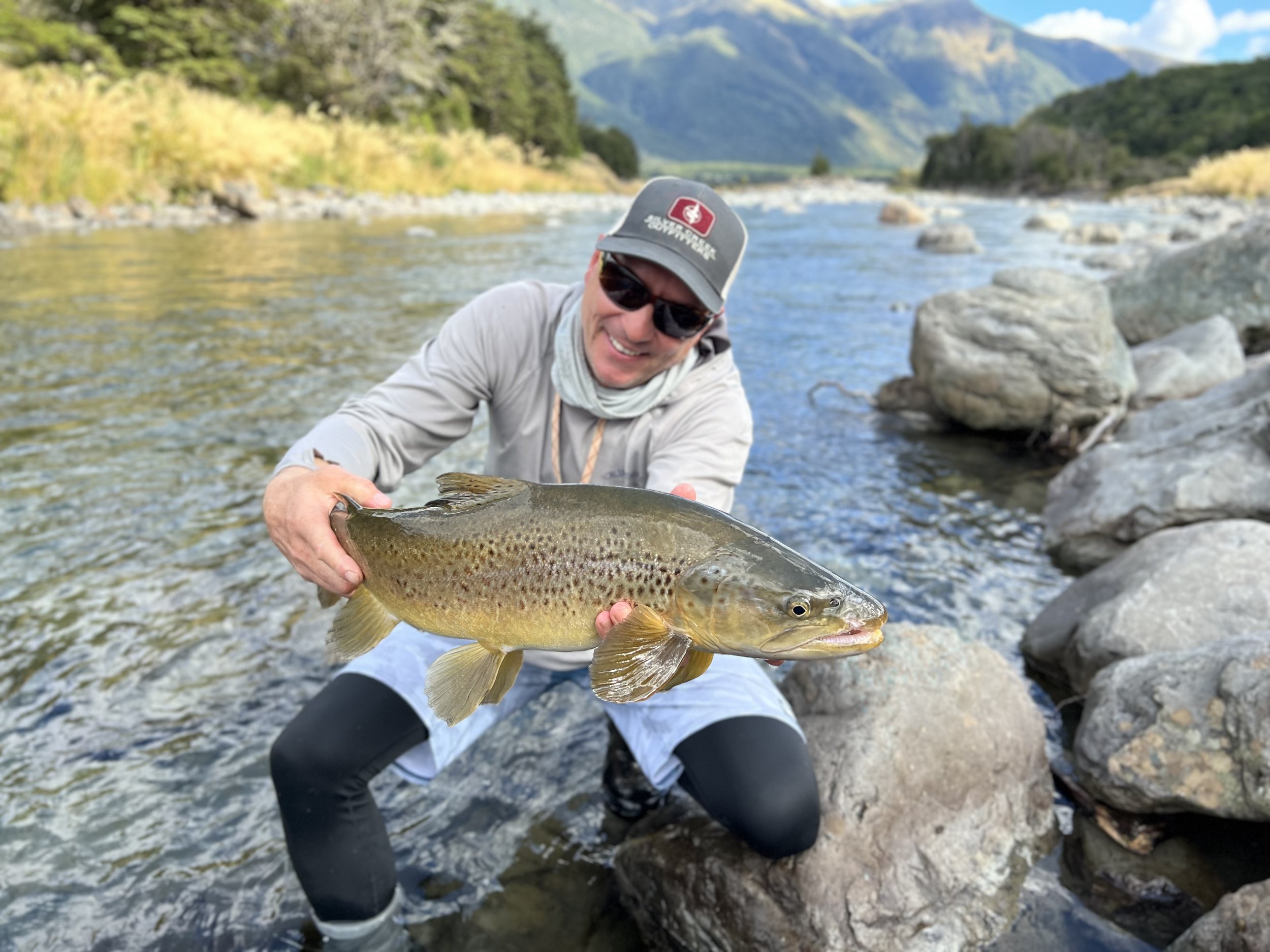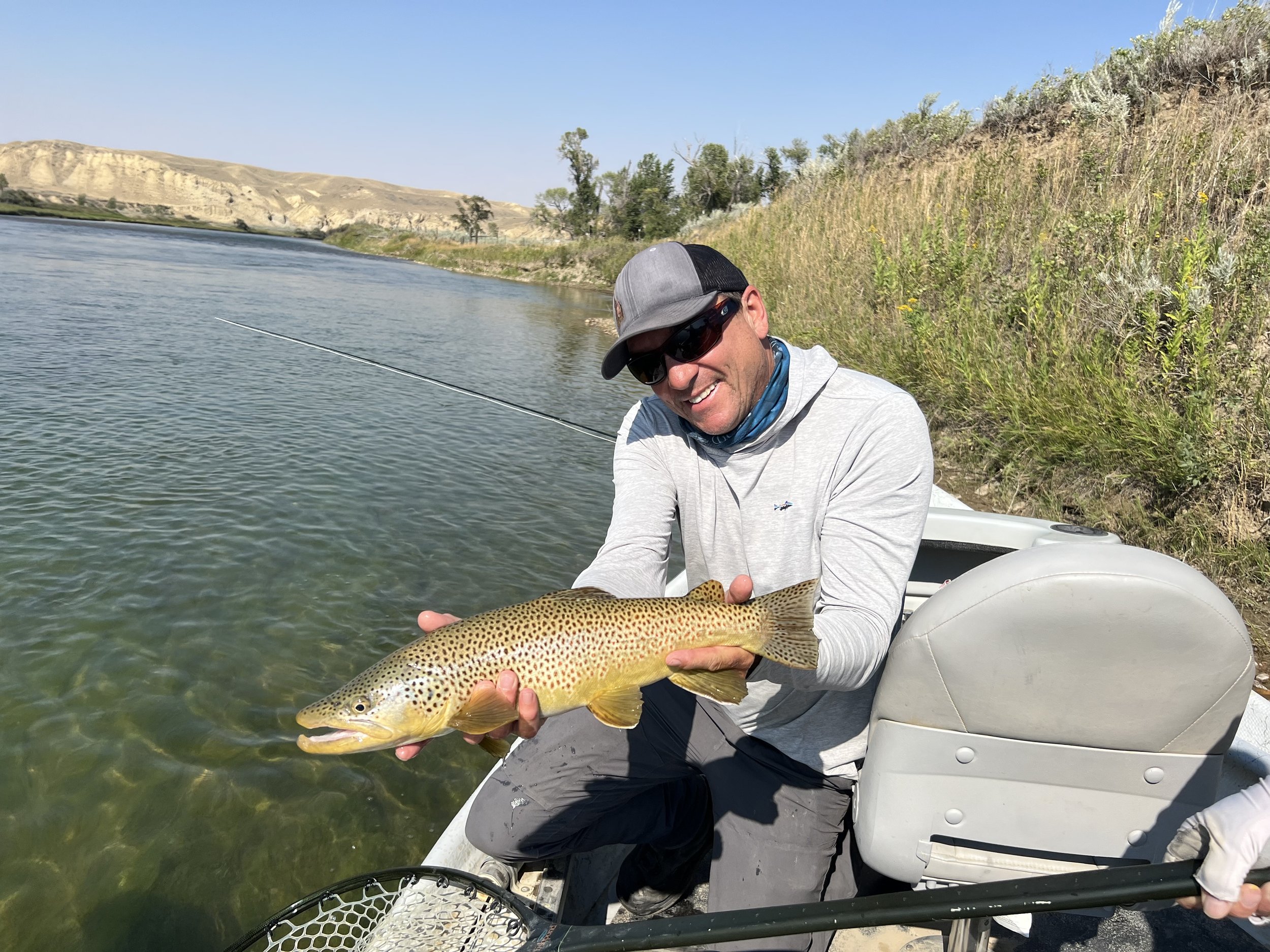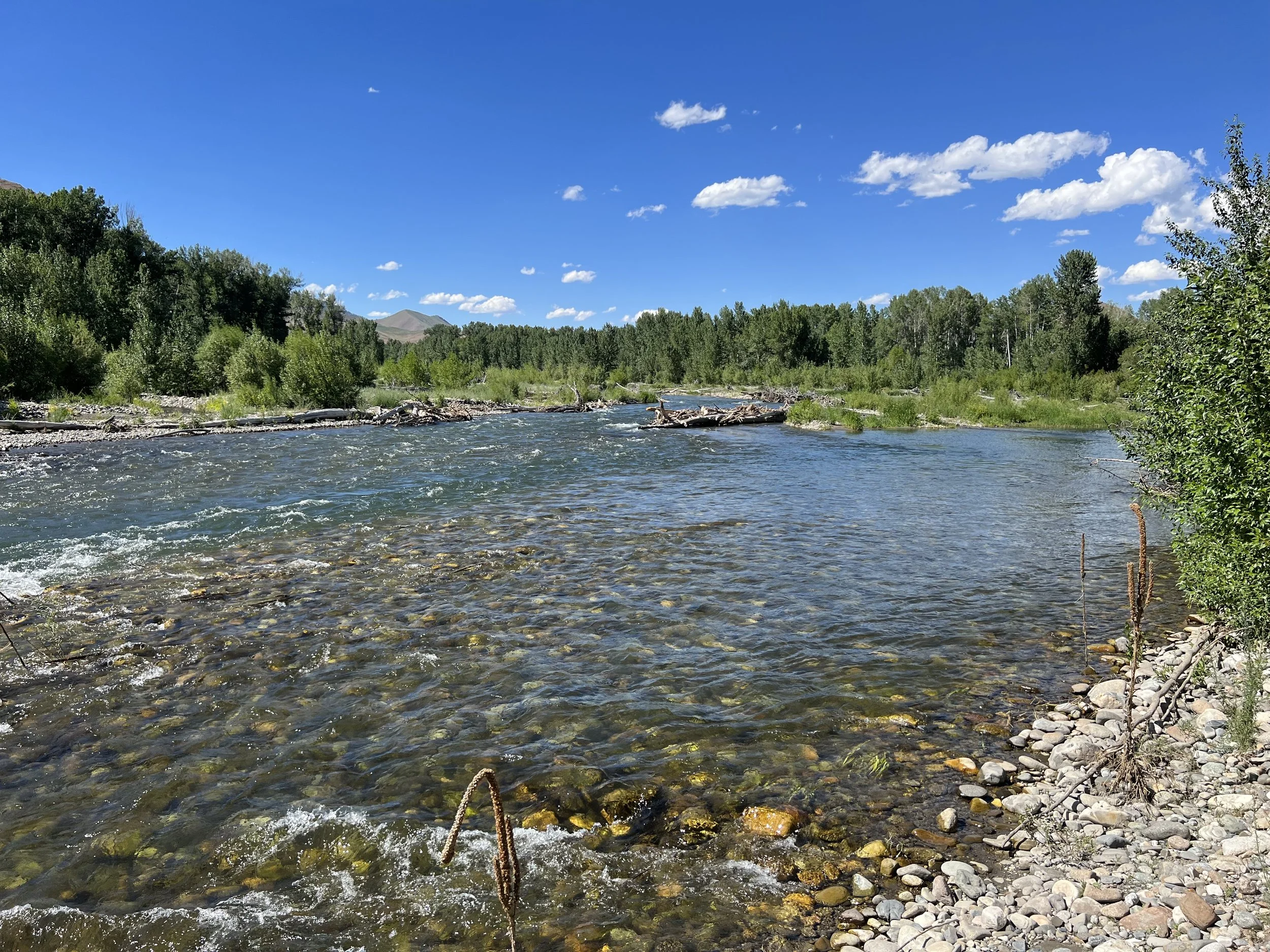
Ewald Grabher
1. Choice of equipment Rods, reels, fly lines, fly floatants, clothes, glasses, and other useful items.
Rod: Use your favorite one, one that you can cast with confidence and feels good in your hands. Some thoughts when picking your rod: A powerful, fast action rod might not be the perfect choice when you are expecting to fish #22 flies on 7x tippet. Maybe on that day you might want one with a softer tip or a lighter weight rod, that protects that fine tippet while fighting fish. Always keep that trophy fish in your mind when you select your gear!
Reel: Same as above. I am sure at this point you get the idea of appropriate choice. Balance is the key.
Line: I use exclusively WF lines. For longer roll casts, I use the forward spay and shoot some line.
Chemicals: I use both, li quid gel and silicon powder, sometimes even combined. I also like the shake ‘n bake. It puts a lot of dust onto the fly and that is sometimes helpful seeing it on the water. If you are tying your own flies, pay attention to creating the desired amount of buoyancy while you create your pattern. Play around with different dubbings, CDC, foam, etc. Most of the fly’s floating ability is constructed during the tying process.
Clothing: Here in Idaho, we live in a high desert climate. It is often chilly in the morning and gets hot as the day progresses. Layering is the key. I use long sleeve gear all the time. I prefer to cover up, rather than using sun screen. A hoody or a buff and sun gloves will do the job. I love to stalk and sight fish. Subdued colors will help you to get closer to the fish.
Glasses: I always keep a dark and an amber colored lens available and choose depending on the light situation. I always carry a microfiber cleaning cloth. As I am getting older, and my eyesight is getting worse, I tried everything there is and ended up with glasses that have the reading lensed built in. It took me a moment to get used to that, but once accustomed, it works the best.
Gear: If you like to check out bugs, a small seine or a piece of mesh is priceless. You know what I mean if you ever tried to pick up a floating fly of the surface of moving water. Other items I carry include: amadou, tippet rings (I use them almost all the time), floating indicator putty (I sometimes use it as an indicator if I fish tiny patterns or emergers), UV cure and lamp, and a big landing net with a medium to long handle.
2, Leader material, build-up, length and knots.
I generally try to get by with the shortest leader possible, and the strongest tippet possible.
11 to 12 foot is my average starting point. If I throw big stimulators on the Salmon river, I go as short as 8 to 9 ft. On Silver creek, where the fish are educated, spooky, and leader shy, I go way longer, up to 17 feet. There are many set ups possible, but I try to keep is as simple as possible. From a new tapered leader, I remove about 20”(50cm) of the butt section and retie the perfection loop on that end. I also cut off the entire tippet section and replace it with high quality tippet material. Tapered leaders can simply not be produced in such high breaking strength as linear tippet. This is where I use the tippet rings. They also make connections between mono and fluorocarbon more durable. The front tippet should be at least 2 to 3 feet (60 to 90 cm). It gives the fly a better presentation and reduces drag. I always keep an eye on that while I am changing flies, and it gets shorter and shorter over time. I use what is called the “100% knot” that I ran across in a fly fishing magazine long time ago and it works for pretty much everything. A regular blood knot, and a clinch or double clinch will do the job just fine. More important is to know that knots wear out and expire. I retie after every good fish or snag, even if the knot still seems strong. I definitely retie every single time before I make a cast to what I would consider a trophy fish.
3, Approach and stealth.
The more you take your time, the sooner you will succeed! I am well aware of how long a minute can feel when approaching the fish of your dreams, but time is your best investment when you approach fish. And as a bonus, you will hear, feel, and see way more things going on in, on, or near the water. When you observe, employ your ears too. Most, even subtle rises can be heard if you just listen. Watch your bow waves. Fish can feel the slightest vibrations.
4. Reading the water.
Fish are looking for three things: Food, shelter, and a place to rest. Most often fish move between those. I found out that every river on this planet creates different habits among its fish. Keeping that in mind while observing (and taking your time!) will reveal the fish and help to discover where, if, and how fish are feeding. I make my first observation BEFORE I walk up to the bank!
5. Casting ability which casts are essential.
I’d say stay with the fundamentals and hone them with effortlessness in mind. I like to say “feel the tip of the rod!” Casting a dry fly is what fly fishing is intended for! Getting your loop tight without tailing is big! I like to slow down my casting and keeping the momentum going with a tight loop. On that level aerial mends and other trick casts come a lot easier. On the Creek, we fish 90% of the time with a downstream presentation, hence the reach cast is one of the most important. I often use a vertical reach, especially when fishing straight or almost straight downstream. Instead of reaching to either side, I stop my rod vertically, and start pulling the tip back above my head as the loop unrolls. Just when the fly is about to hit the water, I drop the tip towards the fly, and that creates a generous amount of slack.
6, Entomology, what should we know.
Trout don’t care if you know every insect’s scientific name. They only care what you throw at them and how you present it. This can be learned by observation. Not taking enough time to check on what’s going on before making the first cast is the most common mistake I see that fly fishers make. Needless to say, the more you study trout food, the more sense you develop to seduce your pray. The sky is the limit!
7, Rise forms Can they tell us something?
Absolutely yes! I repeat myself again: I take a lot of time before I decide on the next step. A fish can be keyed in on a specific insect, or even on a specific state of emergence of that insect during a hatch. Some fish feed precisely on one spot, some move around. Some fish hold just underneath the surface between rises, some return to the bottom. How do we find out- by now you should know the answer! Sophisticated trout seem to develop a more subtle rise form compared to fish that don’t see as much pressure. Fish use suction to inhale their food, and just because I don’t see the head above the water, does not always indicate it is only eating emergers. Again, I observe!
8, Fly selection, Size, shape, materials, which flies are essential.
Every restaurant serves a different menu, and so does every river! Trout (and most other fish) eat pretty much everything that provides them with energy and protein. When I hit a unknown piece of water, I try and get informed of what usually goes on, what kind of hatches occur, and when, etc. As a passionate dry fly fisher, I focus on insect imitations, and generally carry the following with me, depending on the season: Mayflies, caddis, stoneflies, midges, hoppers, beetles, damselflies, ants, and other land insects. In addition to that, I always have some odd stuff in my fly box, like bees, moths, crickets, craneflies, etc. When it comes to hatching insects, it is more likely that we have to match the size, state, and color. I prefer sparsely tied patters. On top, I carry some of my most used patterns with a variety of different colored wing posts to cater to any possible light situation. On Silver Creek, one of the challenges is, after you match the hatch, to identify your own pattern amongst the real insects. Only you see the fly and it’s silhouette from the top, the fish instead, looks at the fly from the bottom.
9, Presentation and drifts.
I have covered some of this in question 5. I use any type of slack line cast there is. Parachute cast, wiggle cast, vertical bow cast, no name cast, - invent your own! I prefer arial mends and slack line presentations over “on the water” mends. Any mend will, more or less, tighten your leader and eventually lead to drag. Another consideration is how much to lead. The first part of your drift will most likely produce a drag free drift and landing the fly as close to the fish as possible without spooking it is usually a good approach. In many situations, it can actually trigger the fish to strike if it sees the fly hitting the water, especially with terrestrials.
10, Upstream or downstream?
Or from the side? Knowing the habits of the fish in the certain river is a big key! On Silver Creek, we mostly fish downstream or at a certain angle across and down.
Fish there expect to see the fly floating down with their tail first. (I’m talking about mayflies here, and the Creek produces a vast amount of prolific hatches of those) They won’t even look at a fly that is not properly positioned. The shadow of the imprint on the surface that even the finest tippet leaves, does the rest. Hence a downstream approach is the key to success. This would never work in New Zealand, those fish are programmed in a totally different way. Learning about the water you are about to fish and gather as much information as you can will be your best investment. You can’t spend too much time preparing for your outing. And you are doing it right now by reading articles like this one. Great Job- you’re on the right track!
11. Fighting fish.
Rod tip up! You probably have heard that many times, and for good reason too! Keeping the rod bent will allow the flexibility of the rod, especially the tip to protect that tippet. If a rubber band and a twine have the same breaking strength – which one do you think is easier to break? You got it! Fish most often fight in bursts. When they run, I let them run. When they stop, I try to regain as much line as I can. I set my reel drag on the light side and use my line hand to palm the reel, or my index finger of my rod hand to squeeze the line against the handle of the rod when I need extra pressure to pump the fish in. I’m always alert and ready to let go release that pressure when the fish makes another run. If I have a good day and are reeling in fish after fish, I usually go up a size in tippet. I might get a few refusals, but I can land fish more quickly and maybe even save a few flies from being broken off.









